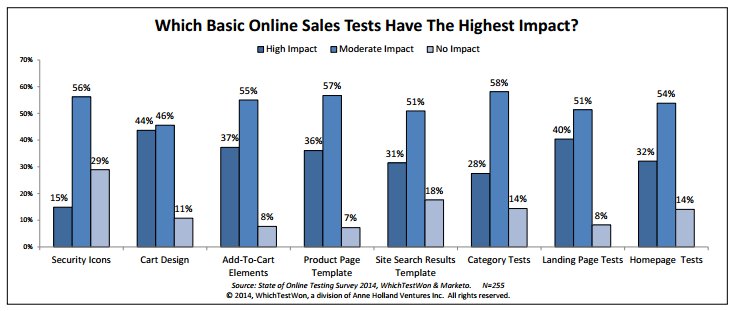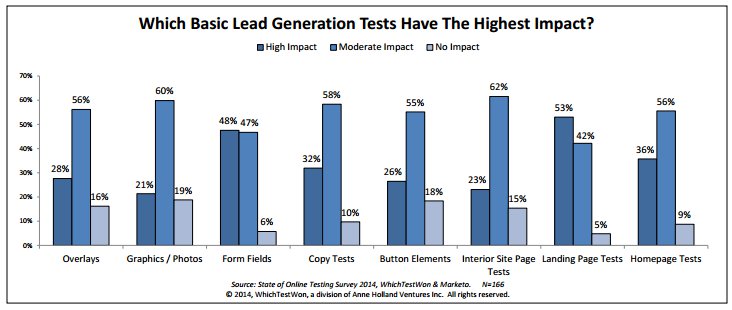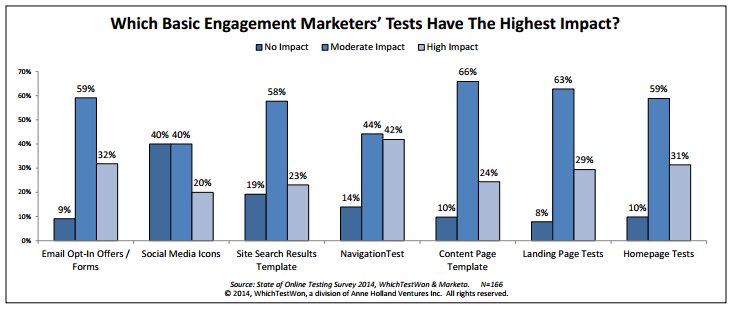Before you run off with this data, remember your first step is to build a baseline to measure against. There are a number of tools to do this, from quantitative tests such as form metrics, funnel metrics and heat maps to qualitative testing such as popup surveys and feedback tabs. Once you have built a baseline and have an understanding of where the problem is you can start A/B testing or split testing. To learn more about how to use different optimization tools download this guide.
For eCommerce sites, your greatest impact is going to come from cart design optimization with Add to Cart functionality next. The most successful designs have a simple layout with clear labels.

For landing pages, form field improvements show the greatest result. An easy way to test these is to use form metrics which measure the time it takes for each field to be filled out and what field they left the page from. This information can indicate what question needs to be re-written or the answer presented in a different format.

To increase your social engagement and increase Facebook Likes and Twitter followers not surprisingly the button design has the strongest impact.

As with all conversion rate optimization testing make sure you approach your test scientifically only changing one variable at a time. Also test to a 95% statistical confidence, otherwise your test result may not be valid.
- The Rise of Intelligent Websites - February 19, 2025
- Top Trending Products to Boost Your Shopify Store in 2024 - September 4, 2024
- AI Terms Glossary: Key AI Concepts You Should Know - August 22, 2024

